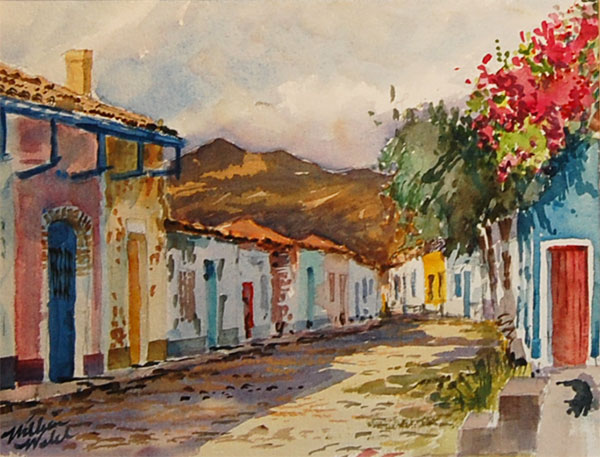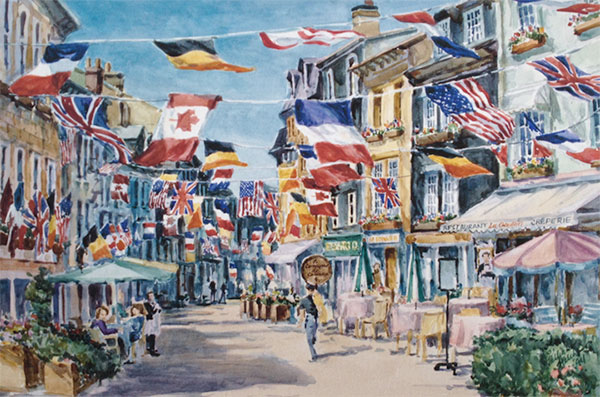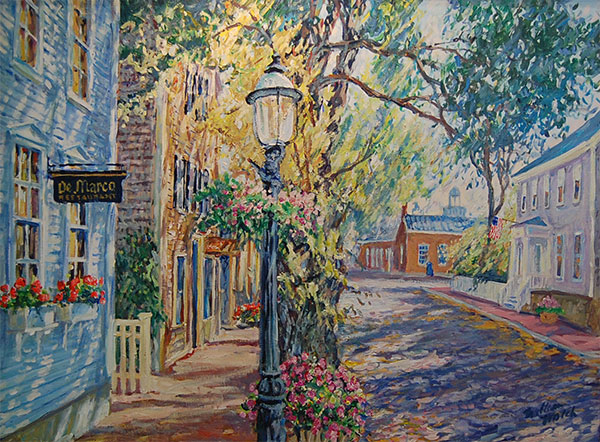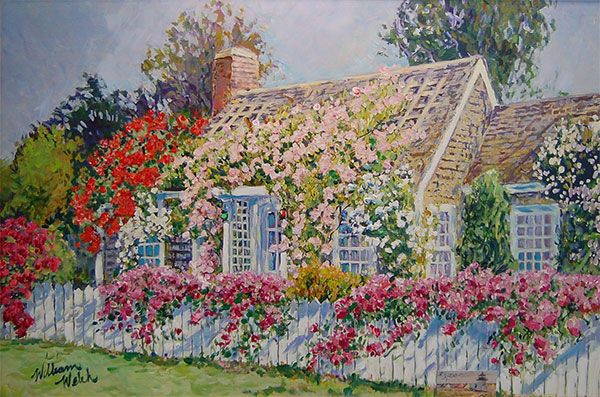Looking at Prints

Most everyone who loves art would prefer to own an original piece by their chosen artist. Unfortunately, few can or desire to go to the expense of original works. But as the demand for appealing images to grace the walls of old and new homes alike has grown, so, too, has the availability of a diverse selection of fine art prints. Today, there is a very definite recognizable clientele and just as many varieties and categories of prints to fill the demand.
However, confusion over the type and relative value of so many different offerings in the art world has left the buyer uncertain in his or her choice. Reproduction techniques, papers and processes abound; there are offset lithographs, monoprints, serigraphs, engravings, etchings, and ink-jet prints to just name a few. To further complicate this vast array, the artist will add to the print – a signature, a number in a specific edition, a sketch or color drawing in the margin. He may even add color or work directly on the printed piece.
The value, of course, is affected by all these factors. And, since all art is generally considered for its investment value, it is very important to understand just what kind of a purchase ir being made. To help our clients evaluate their choice of an image by Nantucket artist William Welch, we offer here a description of the type and value of the three classes of reproduction found in the William Welch Collection. We hope it will be of certain use to our clients and patrons.
FIRST, it needs to be noted that fine art prints, no matter the process, are of little investment value without the artist’s signature affixed. That signature, whether on the image, below, or on the reverse side, is the artist’s acknowledgment that the reproduction accurately represents the best possible recreation of the original image. All the prints in the William Welch Collection are personally inspected and signed by William Welch.
SECOND, a numbered and signed “limited edition” print signifies a higher investment value. Obviously, the lower the total edition, the greater the potential value. As is the case with all William Welch Limited Edition Prints, the printing and the longevity of the paper used should be of the highest standards. It should have a “rag” content of at least 25% to prevent yellowing or discoloration as it ages. It should be noted, too, that numbered editions need acid-free mattings and backings when framed to avoid “foxing” – brown spots or streak, caused by the acids in cellulose paperboards that over time can attack good rag paper.
THIRD, the numbered limited editions of the most value are those with a lower total in the edition. Unless the artist achieves great renown, it is unlikely that a numbered signed print of an edition of more than 1000 will be of much future worth. The average “run” for most artists in print is 500. Certainly, 300 or below would be the most desirable purchase, although it should be a less important consideration than the quality and appeal of the work in general. William Welch maintains strictest control over his numbered editions; supervising the printing at the press, correcting proofs, receiving, numbering and cataloguing all buyers. He oversees the destruction of all materials and excess proofs and prints associated with each edition, including plates, negatives and computer files. This is an absolute assurance of the integrity of your purchase from the William Welch Collection.
FOURTH, and finally, when an artist adds details or color or any hand-work to each print in the limited series, this greatly enhances potential value. It is then considered to be just a step below an original work – highly regarded in the art resale market. This process, referred to as “re-marquing or re-marking”, is done on the actual printed piece by the artist with paints or other art materials. Re-marquing is of much greater value than embellishing or adding sketches, vignettes or small color drawings in the margins of the print. These may be attractive additions, however they negate the value of the main numbered edition. Unfortunately, these devices of “marginal decoration” are no substitute for re-marqued, and may, indeed, be a method used by artists or publishers to wrongfully extend the edition with a “new embellished” series with separate numbering, or, more often, to increase the price of remaining prints in the run, thus boosting sales and perceived value.
We hope that this information may help you in looking at fine art prints as images that give both pleasure and possible investment opportunities. Thank You.
Researched and written for the William Welch Collection by Historic Streets of America Publishing Co., 50 Main Street, PO. Box 2847 Nantucket, MA 02554 (800-900-9779 or 508-228-0687).
Lithographs

The wide variety of lithographs offered in the William Welch Collection represent the finest available printing. They are done on high-quality bright white uncoated stock and printed under the personal supervision of the artist. Mr. Welch has chosen only fine lithographic printers, whose work for museums and publishers is well known. All prints are signed by William Welch and inspected before their sale.
Click here to browse Lithographs.
Limited Edition Prints

The William Welch Collection of limited edition prints are of a higher investment value than signed but un-numbered works in lithography. The paper used is acid-free, buffered to withstand aging or deterioration, and has a cotton or linen content referred to as “rag” content. This helps assure archival long life. The heavy rag vellum stock that Mr. Welch uses in his limited editions has an archival rating of at least 300 years. All editions are strictly guarded by the artist, who personally destroys or supervises the destruction of production materials and images of the work. Any prints over the specified number in the edition are destroyed as well. It is not unusual for Mr. Welch to go through many color “proofs” before signing off on the final run. This is your assurance that the reproduction definitely satisfies the artist’s goals for color and quality.
All buyers of William Welch Limited Editions receive a place in the Collection Register, their name and address listed next to the number they have chosen Signed and numbered editions are issued in only one size, usually larger than other lithographs, and there will never be any duplication of that image in print except for promotional materials, of course.
Click here to browse Limited Edition Prints.
Giclée Limited Edition Prints

In Mr. Welch’s new series, of Giclée Iris prints, there are a number of advantages to the investment buyer. These are very much state-of-the-art reproductions. Actual 100% rag watercolor papers are used for each print, recreating the texture of an original artwork. And, while most publishers of iris prints use inks whose color permanence is not assured, the publisher of the Giclée Iris Prints in the William Welch Collection has developed patented proprietary inks which have been tested by their creator with rapid-aging laser light exposure. They are certified to match the archival stability and permanence of original artists pigments that Mr. Welch user. The richness, depth and transparency of these inks gives the print heretofore unattainable quality practically indistinguishable from Mr. Welch’s original paintings.
These large, handsome, prints are each color-remarqued by the artist-individualized with unique color passages and notes. Mr. Welch carefully and delicately enhances each print, taking hours of work in his studio. Then, he signs and adds “color-remarqued” and the date of that added work. Once framed in acid-free materials, the buyer possesses the ultimate in fine art reproduction of superior permanence and value.
Click here to browse Giclée Limited Edition Prints.
